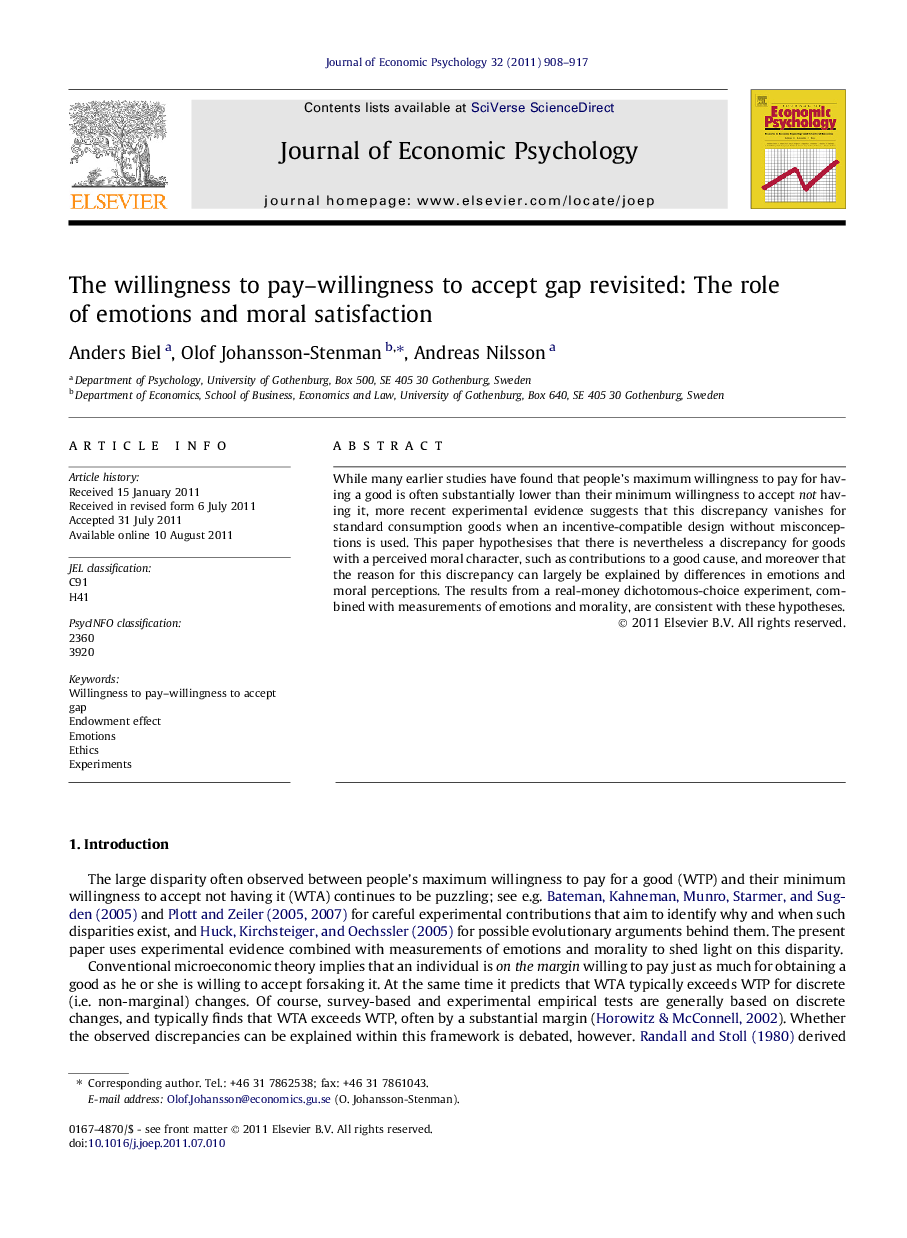| کد مقاله | کد نشریه | سال انتشار | مقاله انگلیسی | نسخه تمام متن |
|---|---|---|---|---|
| 885175 | 912664 | 2011 | 10 صفحه PDF | دانلود رایگان |

While many earlier studies have found that people’s maximum willingness to pay for having a good is often substantially lower than their minimum willingness to accept not having it, more recent experimental evidence suggests that this discrepancy vanishes for standard consumption goods when an incentive-compatible design without misconceptions is used. This paper hypothesises that there is nevertheless a discrepancy for goods with a perceived moral character, such as contributions to a good cause, and moreover that the reason for this discrepancy can largely be explained by differences in emotions and moral perceptions. The results from a real-money dichotomous-choice experiment, combined with measurements of emotions and morality, are consistent with these hypotheses.
► Many studies suggest that the WTP for a good is lower than the WTA for not having it.
► Recent evidence has questioned these findings.
► This paper hypothesizes that there is still a discrepancy for “moral goods”.
► The result from a real-money dichotomous-choice experiment confirms the hypothesis.
► The discrepancy is largely explained by measured emotions and moral perceptions.
Journal: Journal of Economic Psychology - Volume 32, Issue 6, December 2011, Pages 908–917